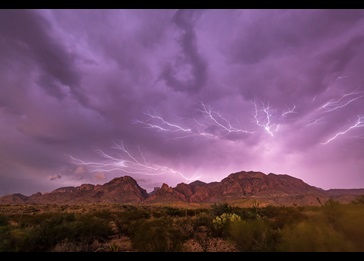If your goal is to be outdoors and away from people, then Big Bend National Park (shown here) is your spot.
It has a lot of outdoors – almost 800,000 acres, in the bend of the Rio Grande River, in Texas. And it has few people. “It is one of the least-visited national parks in the U.S.,” said Skip Hobbie, who filmed a gorgeous hour for “Nature,” at 8 p.m. Wednesday (Feb. 10) on PBS.
That’s relative, of course. Overall visitation (400,000 a year) is topped ten-fold by Yellowstone and Yosemite – and 30-fold by the Grand Smokey Mountains National Park. But some get fewer people – 26,000 at Isle Royale in Michigan, 10,000 at Gate of the Arctic in Alaska.
Hobbie attributes the low attendance to the remote locations. The park is eight hours from his home in Austin and 80 minutes from the trailer where he rested in nearby Terlingua (population 58).
Then again, some people might be wary of the rattlesnakes … or of temperatures that can reach 114 degrees, leaving that trailer as only a slight respite. “With the sun baking down on basically a big, aluminum can, even with air-conditioning, our thermometers would read 97 degrees,” Hobbie said.
For producer John Murray, who’s Irish, the logistics are daunting. “One of the things that particularly struck me, coming from a small island, was the distances are vast,” he said. To catch beavers frolicking in the Rio Grande, “Skip got up at 3 in the morning. He had to leave for a three-hour drive every morning, to be there before sunrise, just for a half-hour.”
But the footage is fun. So are other shots – from mating hummingbirds to climbing goats, three-foot-high bluebonnet flowers … and a bear climbing a tree, to steal a woodpecker’s cache. “The black bear is back in Texas, after being nearly wiped out following decades of hunting and persecution,” said “Nature” producer Fred Kaugman.
Now the goats have been successfully re-introduced by wildlife managers … and the bears have returned on their own. Big Bend has lots of wildlife … plus, at times, some people.
